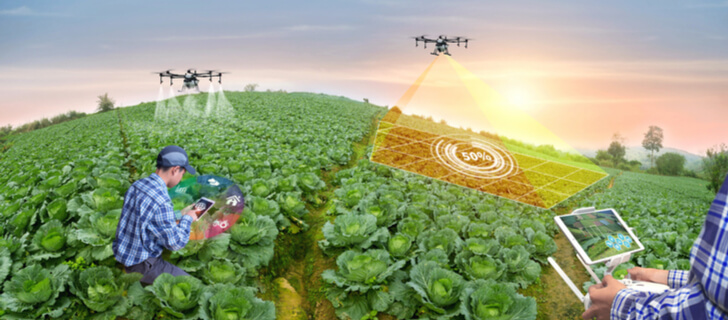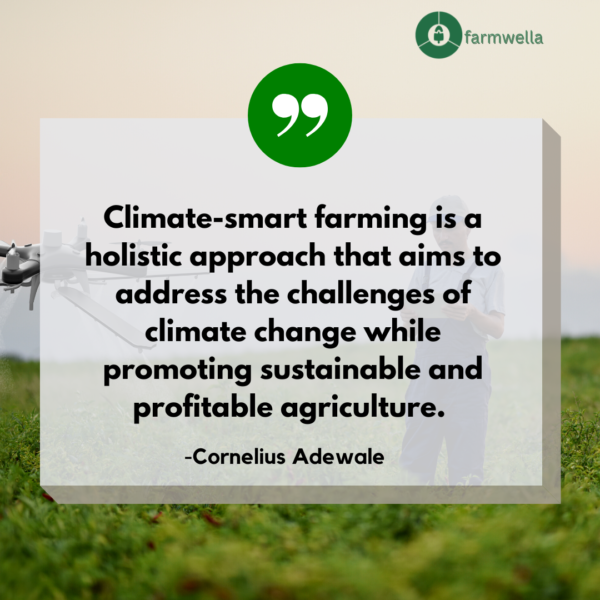Agriculture, like any other industry, is undergoing significant changes due to the advent of new trends, innovations, and new farming practices. It is essential to keep up with the latest trends because they can have a substantial impact on your farm’s productivity.

Crop rotation is one of the oldest and most effective agricultural techniques that farmers have been using for centuries to maximize their land’s potential.
It is surprising, but a lot of farmers, especially startup farmers, are actually unfamiliar with the practice, and some might not even know how to go about it on their own farms.
Basically, crop rotation just means planting different crops in the same area over a certain period of time.
If you’re curious about the benefits of crop rotation and why farmers should consider using it as part of their farming practices, you’re not alone. It is totally okay to wonder about the advantages of a new method before trying it out.
Let’s take a closer look at some of the benefits that farmers can reap by incorporating crop rotation into their farming practices. Not only can it help boost their yield, but it has a variety of other advantages that we’ll explore in this article.
In this article, we’ll delve into some of the most recent trends in agriculture and how you can utilize them to revolutionize your farming practices. But first, let’s examine why it’s crucial to embrace these technologies.
Why it is important for farmers to embrace new trends and innovations
It is essential to understand the benefits of embracing the latest trends and innovations in the industry. By doing so, you can gain a better understanding of why it is important to stay current with agricultural advancements. Let’s take a closer look at three key reasons why staying up-to-date is critical in the agricultural sector.
A boost in your farm productivity
If you’re looking to boost your farm’s productivity, adopting new trends in agriculture could be the key. These trends are specifically developed to help farmers minimize waste and optimize processes, leading to increased productivity. By adopting these new practices, you can take your farm from having low yields to high yields in no time.
A better environment for all
Agriculture can have a significant negative impact on the environment, from the amount of water used to the greenhouse gas emissions produced. However, with the introduction of new trends in agriculture, we can manage some of the damage that agriculture can have on the environment. These new practices can help reduce the impact and promote environmental sustainability.
An edge over competition
In the competitive world of agriculture, staying ahead of the competition is key. With new trends and innovations, you can gain the edge you need to succeed. By keeping up with the latest technology trends, you can position yourself for success in the market. These new practices can help you produce higher-quality crops, which can attract more buyers and increase profits.
5 Top Farming Trends and Innovations to Keep Your Eye On
So now that you’re aware of the potential benefits that can come with adopting new agriculture trends and technology, it’s time to start familiarizing yourself with some of these trends. By staying informed about the latest developments, you can start incorporating them into your farming practices and take advantage of the many benefits they offer.
1. Vertical farming
Vertical farming is a game-changing farming method that involves growing crops in vertically stacked layers. This innovative approach allows for year-round crop production, even in regions where traditional farming methods wouldn’t work.
Vertical farming also helps farmers make the most of their resources, such as water and land, by using them more efficiently. By providing a controlled environment, vertical farming can also reduce the risk of crop damage caused by pests and diseases. This opens up more opportunities for farmers to grow more crops and ultimately increase productivity.
2. Digital agriculture
This is all about using technology to make farming more efficient, just like any other modern business.
It involves using smartphones, tablets, and other digital tools to keep track of important factors like crop growth, soil conditions, and weather patterns. With the help of software and apps, farmers can manage various aspects of their operations, from planting and harvesting schedules to inventory management and financial tracking. By embracing digital agriculture, farmers can increase their productivity and profitability while minimizing waste and errors.
3. Climate-smart farming
The climate can be unpredictable and can have a huge impact on farm operations, but with the latest trends and innovations, farmers can take steps to mitigate the risks.
Climate-smart farming is one such practice, which focuses on sustainable farming methods that can withstand the challenges posed by climate change.

This includes using crops that are resistant to drought and implementing soil conservation techniques and water management practices to preserve resources. Additionally, renewable energy sources like solar and wind power can help reduce carbon emissions and promote a more sustainable future for agriculture.
4. Precision agriculture
This is an amazing trend that farmers can adopt to take their farming practices to the next level. It’s a technology that utilizes drones, sensors, and GPS to monitor crop growth, soil conditions, and weather patterns.
By leveraging this technology, farmers can make informed decisions on how much water and fertilizer to use, resulting in higher crop yields and less wastage of resources. Additionally, precision agriculture enables farmers to identify areas that require more attention, leading to increased efficiency in their farming operations.
5. Urban Farming

Urban agriculture is a trend that’s gaining traction, and it’s all about producing food in urban areas. This means you can grow crops in all sorts of spaces, from rooftop gardens and community plots to indoor farms.
With urban agriculture, you get fresh, locally grown produce that doesn’t require long-distance transportation, which is great for reducing the environmental impact of food production. Plus, urban agriculture provides economic opportunities for local farmers and helps to build stronger communities.
In a nutshell
Staying informed is crucial to stay ahead of the game, especially since new trends are constantly emerging in the agricultural industry. Without keeping up-to-date with this information, you may miss out on the opportunity to incorporate these new trends into your farming practices, and ultimately miss out on the potential benefits for your farm’s future.